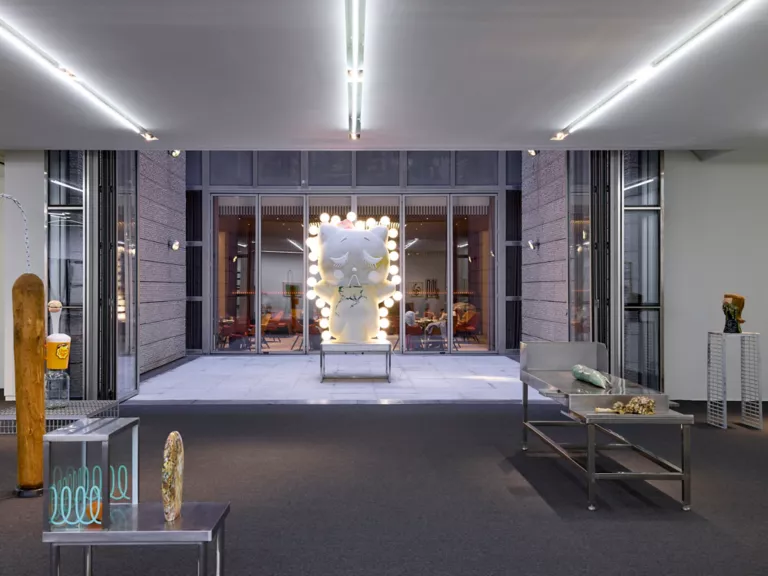
“Eye See the World- Good After눈” Poster image. ©CR Collective
CR Collective presents a solo exhibition “Eye See the World- Good After눈(noon)” by Suji Han, until July 27.
Han has been focusing on the process of how ‘bitchondria’ came to harbor green fluorescent proteins and how invisible pathways became visible. This exhibition expands her worldview by exploring the new creatures that have appeared in the world since they became visible, and how their eyes have been transformed by seeing the invisible.
The artist has been investigating the question of whether it is possible to visualize digital space beyond the flat liquid crystal through the fictional entity, the bitchondria. According to the artist, a bitchondria is an entity that can explore the multi-digital space between the digital and material worlds and possesses all the characteristics of a quantum bit, which is necessary for the evolution of artificial intelligence in the future.
Although the world in which the bitchondria appeared is an artificially created fictional world, the artist has summoned concrete evidence to prove its existence in the form of three-dimensional objects such as maps of the digital world, bitchondria cross-sections, and fossils.
As the title of the exhibition suggests, the artist focuses on evolution, especially the expansion of vision. The eyes in Good Afternoon (2024)* are eyes that have evolved to absorb as much information as possible from previously unseen areas as quickly as possible. The screen viewed by those eyes is able to obtain images and information values that are completely different from the current humanity with monocular eyeballs.
The invisible pathways in the exhibit are made visible, and the ecosystem seen with the expanded eyes seems to be viewed through a different lens than the world outside the exhibit. This enables the experience of stepping back or observing from the outside, rather than from the inside of humanity and the planet.
* The “noon” in Afternoon is pronounced [ nuːn ], which is the same as the Korean word for eye (目).

















